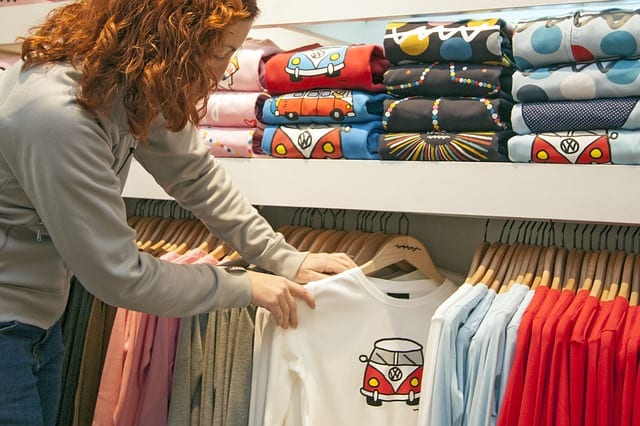Screen printing on fabric is partly dependent on the fabric itself, and some fabrics are easier to work with than others. There are a number of variables in screen printing in Austin TX that will affect your outcome, and the ink and curing process also make a big difference in terms of how the final product will come out. That being said, advances in ink technology have made it possible to print on an array of different materials without worrying too much about bleeding or about the color not sticking.
Not All Fabrics are Created Equal
If you’re looking to get a batch of t-shirts or other fabrics or garments screen printed, you need to know if you can actually expect the fabric to give you the result you desire or not. Since all fabrics are not the same, this article will help you understand what is the most suitable for printing.
Cotton
Among all fabrics, cotton is traditionally regarded as the best fabric for Austin t-shirt printing. This is due to its absorbent nature, which inherently means that it soaks up more ink and thus is a better substrate for screen printing. While pure cotton has traditionally been favored, 50/50 blend Austin t-shirts are actually an ideal fabric to print on because they have cotton’s absorbent qualities but tend to be softer to the touch – important because a significant factor in determining whether you wear an article of clothing or consign it to your dresser drawer is whether or not it’s actually comfortable to wear.
Silk
There are other natural and naturally-derived fabrics that are also suitable for screen printing, albeit with a few caveats. Silk provides an ideal surface for screen prints, but do keep in mind that thinner fabrics absorb less ink than thicker ones. What this means is that you shouldn’t expect the same look as what you’d get with cotton or wool, and furthermore, care must be taken during the printing process itself.
Wool
Wool is also a great fiber for screen printing because it’s thick and readily absorbs more ink, but textured fabrics will present more of a challenge – especially true when you want to print an intricate design. Other natural fibers tend to yield a decent result, so if you want to get screen prints done on organic bamboo fiber t-shirts, go ahead.
Advances in Technology Mean More Options
Advances in screen printing technology have made it easier than ever before to print on a wide array of different fabrics that have traditionally been regarded as difficult to print on. Synthetic fibers do not absorb ink as readily as cotton, but the application of a synthetic fixer will help remedy this problem.
Some fabrics may be perfectly suitable for screen printing, but need to be cured at a lower temperature so that the fabric itself does not start burning. This is particularly true of thinner textiles made from silk or nylon, which need to be cured at around 180 degrees so that the fabric doesn’t start burning.
Consult with a Professional Screen Printer
Picking the right fabric for Austin t-shirt printing involves a few considerations, but you shouldn’t think of it as something that presents a lot of difficulties. If you’re planning on ordering a batch of clothing with a printed design or logo, it’s probably best to consult with the screen printing shop that you’re commissioning to find the best fabrics. Screen printers will be happy to help walk you through the fabric selection process.
Need help picking fabric for your screen printing project? Contact RiverCity Screenprinting & Embroidery, a screen printing shop with locations in Austin and San Marcos, TX for more information.

